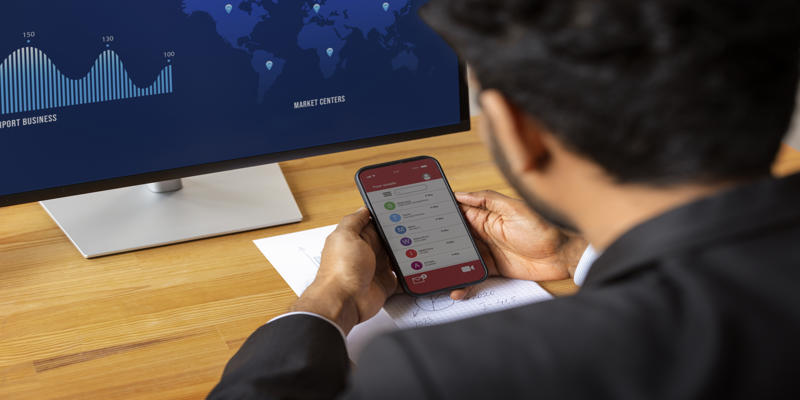Migraines can be a real challenge, especially when they strike during work hours. Dealing with the intense headaches, sensitivity to light and sound, and the overall discomfort can seriously affect your productivity and wellbeing. Understanding how to manage these debilitating episodes is essential to maintaining your focus and efficiency at work. This guide provides practical and straightforward tips to help you cope with migraine attacks while on the job. By following these strategies, you can learn to minimize the impact of migraines and continue to thrive in your work environment.
Know Your Triggers

The factors that cause the migraine can be different from one individuals to another. Possible causes include stress, trigger foods and beverages, shift work sleep disorders, and even noise or light sensitivity. By maintaining a detailed record of all that occurs in the lead up to the onset of your migraine, then you may be able to pinpoint what specifically is causing them. Identify all the things that you consume, hours you sleep, your stress levels, and anything else each time you are attacked by a migraine. If these patterns are identified, activities could be changed, avoided or lessened so that there can be less migraine occurrence or intensity when working.
2. Be Prepared
Its always good to have your migraine medication and any other necessary supplies at work just in case. Store it in a convenient area, for example in your desk, or purse so that you can easily grab some whenever you want to. Moreover, as far as the migraine attacks are concerned, you should also inform your supervisor and other coworkers on your condition and on what measures you may have to take if a migraine attack happens. If they know and understand you have episodes, they will be much more supportive during such times.
3. Take Regular Breaks
Problems plaguing computer users include eye strain and migraines when they bend low to type or sit in front of the computer without a break. Common knowledge tells that one should not sit and look at the screens for hours, even if its simply typing the text on a keyboard. Take a moment to shut your eyes or at least extend your legs or maybe step outside for a few minutes. With the help of this you can ease up your mind and body and thus avoid getting a migraine.
4. Create a Comfortable Workspace
Ergonomic workspaces are crucial for preventing migraines and reducing their impact when they do occur. Adjust the lighting, temperature, and noise levels in your workspace to suit your personal needs. Consider investing in an anti-glare screen or migraine glasses if you work on a computer regularly. These small changes can make a significant difference in minimizing discomfort during migraines at work.
5. Practice Relaxation Techniques
Incorporating relaxation techniques into your daily routine can be a powerful tool for managing migraines. Techniques such as deep breathing exercises, meditation, and progressive muscle relaxation can help soothe tension and reduce stress, which are common migraine triggers. Set aside a few minutes each day to practice these techniques, ideally during a quiet time or when you start to feel a migraine brewing. Guided relaxation apps or videos can also be helpful resources, providing structured support for beginners.
6. Stay Hydrated
Dehydration is a well-known migraine trigger. Ensure you drink plenty of water throughout the day to keep your body adequately hydrated. Keep a water bottle at your desk and aim to refill it several times throughout your workday. Additionally, be mindful of consuming too much caffeine or alcohol, as these can contribute to dehydration and may exacerbate migraine symptoms.
7. Eat Balanced Meals
Skipping meals or eating irregularly can lead to low blood sugar levels, which is another common trigger for migraines. Plan your meals to include a good balance of protein, complex carbohydrates, and healthy fats, and avoid overly processed or trigger foods, if you're aware of them. Bringing lunch and healthy snacks from home can help ensure you have access to nourishing food throughout the day.
8. Manage Stress
Stress is a frequent trigger for migraines, and managing stress levels is crucial in reducing the occurrence of migraine attacks at work. Incorporate stress management techniques into your daily routine, such as setting realistic goals, prioritizing tasks, and learning to say no when necessary. It might also be beneficial to practice mindfulness techniques, like focusing on your breath or taking short moments to refocus, throughout your day. These strategies can help you stay calm and centered during stressful situations, potentially preventing migraines from occurring.
9. Utilize Pain Management Techniques
During a migraine attack, it's essential to have some pain management techniques at your disposal. Some people find relief from applying a cold or warm compress to their head or neck, while others benefit from using acupressure or essential oils. Experiment with different methods to find what works best for you and keep these items readily available in your workspace.
10. Communicate with Your Supervisor
Having open communication with your supervisor about your migraine condition is crucial for managing migraines at work. Make sure they understand the severity of your symptoms and how they can support you during a migraine attack. It may be helpful to have a plan in place for when you need to take breaks or leave work early due to a severe episode.
Seek Support from Colleagues

Having the support of colleagues during a migraine attack can make a significant difference in how you feel both physically and mentally. Let trusted colleagues know about your condition and how they can help you during a migraine attack, whether it's covering for you while you take a break or simply offering emotional support. It's also essential to maintain positive relationships with coworkers, as stress and conflicts in the workplace can contribute to migraines.
12. Consider Flexible Work Arrangements
If your migraines significantly impact your ability to work in a traditional office setting, consider talking to your employer about flexible work arrangements. This could include options such as working from home or adjusting your work schedule to accommodate the specific needs of managing your condition.
Conclusion
Managing migraines at work requires a proactive approach and thoughtful planning. By implementing these strategies, such as preparing for potential attacks, creating a comfortable and ergonomic workspace, and maintaining open communication with supervisors and colleagues, you can reduce the impact of migraines on your productivity and well-being. Remember that each person's experience with migraines is unique, so it is essential to tailor these recommendations to suit your personal needs. Prioritizing your health is critical, and seeking support when necessary can make navigating migraines at work more manageable.











